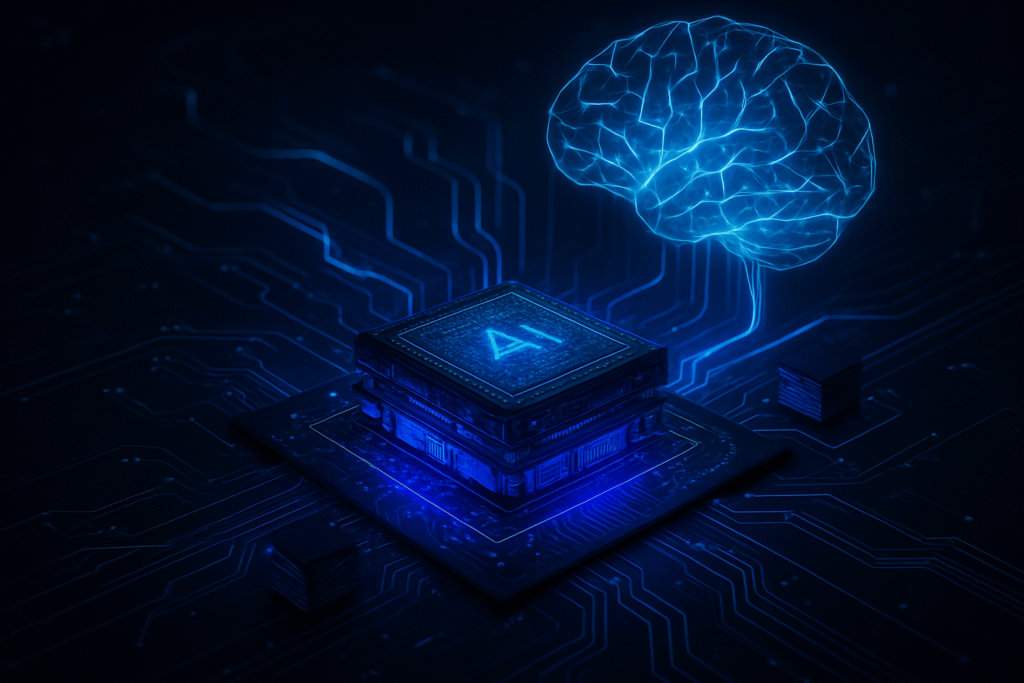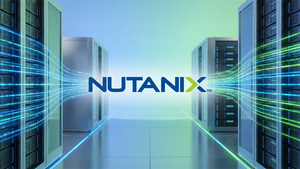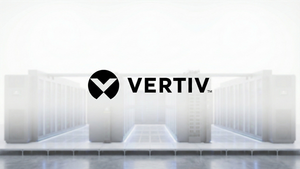
As the global microelectronics industry converges in Phoenix, Arizona, for SEMICON West 2025, scheduled from October 7-9, 2025, the anticipation is palpable. Marking a significant historical shift by moving outside San Francisco for the first time in its 50-year history, this year's event is poised to be North America's premier exhibition and conference for the global electronics design and manufacturing supply chain. With the overarching theme "Stronger Together—Shaping a Sustainable Future in Talent, Technology, and Trade," SEMICON West 2025 is set to be a pivotal platform, showcasing innovations that will profoundly influence the future trajectory of microelectronics and, critically, the accelerating evolution of Artificial Intelligence.
The immediate significance of SEMICON West 2025 for AI cannot be overstated. With AI as a headline topic, the event promises dedicated sessions and discussions centered on integrating AI for optimal chip performance and energy efficiency—factors paramount for the escalating demands of AI-powered applications and data centers. A key highlight will be the CEO Summit keynote series, featuring a dedicated panel discussion titled "AI in Focus: Powering the Next Decade," directly addressing AI's profound impact on the semiconductor industry. The role of semiconductors in enabling AI and Internet of Things (IoT) devices will be extensively explored, underscoring the symbiotic relationship between hardware innovation and AI advancement.
Unpacking the Microelectronics Innovations Fueling AI's Future
SEMICON West 2025 is expected to unveil a spectrum of groundbreaking microelectronics innovations, each meticulously designed to push the boundaries of AI capabilities. These advancements represent a significant departure from conventional approaches, prioritizing enhanced efficiency, speed, and specialized architectures to meet the insatiable demands of AI workloads.
One of the most transformative paradigms anticipated is Neuromorphic Computing. This technology aims to mimic the human brain's neural architecture for highly energy-efficient and low-latency AI processing. Unlike traditional AI, which often relies on power-hungry GPUs, neuromorphic systems utilize spiking neural networks (SNNs) and event-driven processing, promising significantly lower energy consumption—up to 80% less for certain tasks. By 2025, neuromorphic computing is transitioning from research prototypes to commercial products, with systems like Intel Corporation (NASDAQ: INTC)'s Hala Point and BrainChip Holdings Ltd (ASX: BRN)'s Akida Pulsar demonstrating remarkable efficiency gains for edge AI, robotics, healthcare, and IoT applications.
Advanced Packaging Technologies are emerging as a cornerstone of semiconductor innovation, particularly as traditional silicon scaling slows. Attendees can expect to see a strong focus on techniques like 2.5D and 3D Integration (e.g., Taiwan Semiconductor Manufacturing Company Limited (NYSE: TSM)'s CoWoS and Intel Corporation (NASDAQ: INTC)'s EMIB), hybrid bonding, Fan-Out Panel-Level Packaging (FOPLP), and the use of glass substrates. These methods enable multiple dies to be placed side-by-side or stacked vertically, drastically reducing interconnect lengths, improving data throughput, and enhancing energy efficiency—all critical for high-performance AI accelerators like those from NVIDIA Corporation (NASDAQ: NVDA). Co-Packaged Optics (CPO) is also gaining traction, integrating optical communications directly into packages to overcome bandwidth bottlenecks in current AI chips.
The relentless evolution of AI, especially large language models (LLMs), is driving an insatiable demand for High-Bandwidth Memory (HBM) customization. SEMICON West 2025 will highlight innovations in HBM, including the recently launched HBM4. This represents a fundamental architectural shift, doubling the interface width to 2048-bit per stack, achieving up to 2 TB/s bandwidth per stack, and supporting up to 64GB per stack with improved reliability. Memory giants like SK Hynix Inc. (KRX: 000660) and Micron Technology, Inc. (NASDAQ: MU) are at the forefront, incorporating advanced processes and partnering with leading foundries to deliver the ultra-high bandwidth essential for processing the massive datasets required by sophisticated AI algorithms.
Competitive Edge: How Innovations Reshape the AI Industry
The microelectronics advancements showcased at SEMICON West 2025 are set to profoundly impact AI companies, tech giants, and startups, driving both fierce competition and strategic collaborations across the industry.
Tech Giants and AI Companies like NVIDIA Corporation (NASDAQ: NVDA) and Advanced Micro Devices, Inc. (NASDAQ: AMD) stand to significantly benefit from advancements in advanced packaging and HBM4. These innovations are crucial for enhancing the performance and integration of their leading AI GPUs and accelerators, which are in high demand by major cloud providers such as Amazon Web Services, Inc. (NASDAQ: AMZN), Microsoft Corporation (NASDAQ: MSFT) Azure, and Alphabet Inc. (NASDAQ: GOOGL) Cloud. The ability to integrate more powerful, energy-efficient memory and processing units within a smaller footprint will extend their competitive lead in foundational AI computing power. Meanwhile, cloud giants are increasingly developing custom silicon (e.g., Alphabet Inc. (NASDAQ: GOOGL)'s Axion and TPUs, Microsoft Corporation (NASDAQ: MSFT)'s Azure Maia 100, Amazon Web Services, Inc. (NASDAQ: AMZN)'s Graviton and Trainium/Inferentia chips) optimized for AI and cloud computing workloads. These custom chips heavily rely on advanced packaging to integrate diverse architectures, aiming for better energy efficiency and performance in their data centers, leading to a bifurcated market of general-purpose and highly optimized custom AI chips.
Semiconductor Equipment and Materials Suppliers are the foundational enablers of this AI revolution. Companies like ASMPT Limited (HKG: 0522), EV Group, Amkor Technology, Inc. (NASDAQ: AMKR), Taiwan Semiconductor Manufacturing Company Limited (NYSE: TSM), Broadcom Inc. (NASDAQ: AVGO), Intel Corporation (NASDAQ: INTC), Qnity (DuPont de Nemours, Inc. (NYSE: DD)'s Electronics business), and FUJIFILM Holdings Corporation (TYO: 4901) will see increased demand for their cutting-edge tools, processes, and materials. Their innovations in advanced lithography, hybrid bonding, and thermal management are indispensable for producing the next generation of AI chips. The competitive landscape for these suppliers is driven by their ability to deliver higher throughput, precision, and new capabilities, with strategic partnerships (e.g., SK Hynix Inc. (KRX: 000660) and Taiwan Semiconductor Manufacturing Company Limited (NYSE: TSM) for HBM4) becoming increasingly vital.
For Startups, SEMICON West 2025 offers a platform for visibility and potential disruption. Startups focused on novel interposer technologies, advanced materials for thermal management, or specialized testing equipment for heterogeneous integration are likely to gain significant traction. The "SEMI Startups for Sustainable Semiconductor Pitch Event" highlights opportunities for emerging companies to showcase breakthroughs in niche AI hardware or novel architectures like neuromorphic computing, which could offer significantly more energy-efficient or specialized solutions, especially as AI expands beyond data centers. These agile innovators could attract strategic partnerships or acquisitions by larger players seeking to integrate cutting-edge capabilities.
AI's Hardware Horizon: Broader Implications and Future Trajectories
The microelectronics advancements anticipated at SEMICON West 2025 represent a critical, hardware-centric phase in AI development, distinguishing it from earlier, often more software-centric, milestones. These innovations are not merely incremental improvements but foundational shifts that will reshape the broader AI landscape.
Wider Impacts: The chips powered by these advancements are projected to contribute trillions to the global GDP by 2030, fueling economic growth through enhanced productivity and new market creation. The global AI chip market alone is experiencing explosive growth, projected to exceed $621 billion by 2032. These microelectronics will underpin transformative technologies across smart homes, autonomous vehicles, advanced robotics, healthcare, finance, and creative content generation. Furthermore, innovations in advanced packaging and neuromorphic computing are explicitly designed to improve energy efficiency, directly addressing the skyrocketing energy demands of AI and data centers, thereby contributing to sustainability goals.
Potential Concerns: Despite the immense promise, several challenges loom. The sheer computational resources required for increasingly complex AI models lead to a substantial increase in electricity consumption, raising environmental concerns. The high costs and complexity of designing and manufacturing cutting-edge semiconductors at smaller process nodes (e.g., 3nm, 2nm) create significant barriers to entry, demanding billions in R&D and state-of-the-art fabrication facilities. Thermal management remains a critical hurdle due to the high density of components in advanced packaging and HBM4 stacks. Geopolitical tensions and supply chain fragility, often dubbed the "chip war," underscore the strategic importance of the semiconductor industry, impacting the availability of materials and manufacturing capabilities. Finally, a persistent talent shortage in both semiconductor manufacturing and AI application development threatens to impede the pace of innovation.
Compared to previous AI milestones, such as the early breakthroughs in symbolic AI or the initial adoption of GPUs for parallel processing, the current era is profoundly hardware-dependent. Advancements like advanced packaging and next-gen lithography are pushing performance scaling beyond traditional transistor miniaturization by focusing on heterogeneous integration and improved interconnectivity. Neuromorphic computing, in particular, signifies a fundamental shift in hardware capability rather than just an algorithmic improvement, promising entirely new ways of conceiving and creating intelligent systems by mimicking biological brains, akin to the initial shift from general-purpose CPUs to specialized GPUs for AI workloads, but on a more architectural level.
The Road Ahead: Anticipated Developments and Expert Outlook
The innovations spotlighted at SEMICON West 2025 will set the stage for a future where AI is not only more powerful but also more pervasive and energy-efficient. Both near-term and long-term developments are expected to accelerate at an unprecedented pace.
In the near term (next 1-5 years), we can expect continued optimization and proliferation of specialized AI chips, including custom ASICs, TPUs, and NPUs. Advanced packaging technologies, such as HBM, 2.5D/3D stacking, and chiplet architectures, will become even more critical for boosting performance and efficiency. A significant focus will be on developing innovative cooling systems, backside power delivery, and silicon photonics to drastically reduce the energy consumption of AI workloads. Furthermore, AI itself will increasingly be integrated into chip design (AI-driven EDA tools) for layout generation, design optimization, and defect prediction, as well as into manufacturing processes (smart manufacturing) for real-time process optimization and predictive maintenance. The push for chips optimized for edge AI will enable devices from IoT sensors to autonomous vehicles to process data locally with minimal power consumption, reducing latency and enhancing privacy.
Looking further into the long term (beyond 5 years), experts predict the emergence of novel computing architectures, with neuromorphic computing gaining traction for its energy efficiency and adaptability. The intersection of quantum computing with AI could revolutionize chip design and AI capabilities. The vision of "lights-out" manufacturing facilities, where AI and robotics manage entire production lines autonomously, will move closer to reality, leading to total design automation in the semiconductor industry.
Potential applications are vast, spanning data centers and cloud computing, edge AI devices (smartphones, cameras, autonomous vehicles), industrial automation, healthcare (drug discovery, medical imaging), finance, and sustainable computing. However, challenges persist, including the immense costs of R&D and fabrication, the increasing complexity of chip design, the urgent need for energy efficiency and sustainable manufacturing, global supply chain resilience, and the ongoing talent shortage in the semiconductor and AI fields. Experts are optimistic, predicting the global semiconductor market to reach $1 trillion by 2030, with generative AI serving as a "new S-curve" that revolutionizes design, manufacturing, and supply chain management. The AI hardware market is expected to feature a diverse mix of GPUs, ASICs, FPGAs, and new architectures, with a "Cambrian explosion" in AI capabilities continuing to drive industrial innovation.
A New Era for AI Hardware: The SEMICON West 2025 Outlook
SEMICON West 2025 stands as a critical juncture, highlighting the symbiotic relationship between microelectronics and artificial intelligence. The key takeaway is clear: the future of AI is being fundamentally shaped at the hardware level, with innovations in advanced packaging, high-bandwidth memory, next-generation lithography, and novel computing architectures directly addressing the scaling, efficiency, and architectural needs of increasingly complex and ubiquitous AI systems.
This event's significance in AI history lies in its focus on the foundational hardware that underpins the current AI revolution. It marks a shift towards specialized, highly integrated, and energy-efficient solutions, moving beyond general-purpose computing to meet the unique demands of AI workloads. The long-term impact will be a sustained acceleration of AI capabilities across every sector, driven by more powerful and efficient chips that enable larger models, faster processing, and broader deployment from cloud to edge.
In the coming weeks and months following SEMICON West 2025, industry observers should keenly watch for announcements regarding new partnerships, investment in advanced manufacturing facilities, and the commercialization of the technologies previewed. Pay attention to how leading AI companies integrate these new hardware capabilities into their next-generation products and services, and how the industry continues to tackle the critical challenges of energy consumption, supply chain resilience, and talent development. The insights gained from Phoenix will undoubtedly set the tone for AI's hardware trajectory for years to come.
This content is intended for informational purposes only and represents analysis of current AI developments.
TokenRing AI delivers enterprise-grade solutions for multi-agent AI workflow orchestration, AI-powered development tools, and seamless remote collaboration platforms.
For more information, visit https://www.tokenring.ai/.







